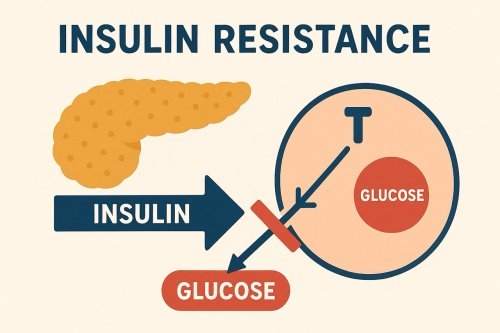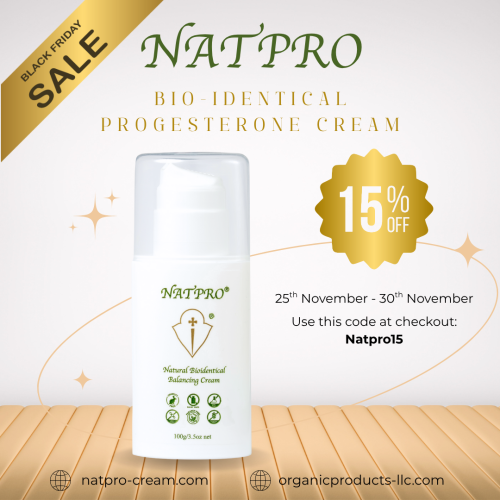Progesterone misconceptions
The web is riddled with what may be called 'progesterone misconceptions', for instance... women complaining that progesterone makes them feel worse, or they put on weight, or they retain water, or their hair falls out, ad nauseum. Or progesterone has made their Candida worse, or that candida feeds off progesterone!
There's more... that they must rotate the areas they rub it on, or only use it on thin skinned areas. That using progesterone at ovulation will prevent it, or too much will 'make' oestrogen. That only progesterone in oil should be used, that you shouldn't start it until you have removed all forms of phytoestrogens or oestrogen mimics from your food, skin care, makeup etc, that if you get any adverse symptoms to reduce or stop the progesterone.
So progesterone gets a bad name. There are plenty of complaints on this site too, so one gets an idea of the problem.
You only have to look at the function the two hormones have, to realise progesterone is not the culprit it's made out to be, but oestrogen is. Yes oestrogen is a vital hormone, but it's extremely potent, a little goes a long way.
In fact, to give you an idea, in serum tests oestrogen is measured in pg/ml or pmol/L, whereas progesterone is measured in ng/ml or nmol/L. A pg or pmol is a thousand times smaller than a ng or nmol.
Without oestrogen women would not have the female shape they have, one which men get too if they have excess circulating. Oestrogen stimulates subcutaneous fat cells to proliferate, hence the change in shape at puberty. But in excess it causes weight gain, which is very difficult to loose unless the excess oestrogen is suppressed.
It causes water retention, the cause of immediate weight gain if it's suddenly stimulated. This is invariably the case if low levels of progesterone are used. The two hormones stimulate each other, as they do in men too. In fact the three hormones, testosterone included, interplay. This stimulation leads to Oestrogen Dominance.
When symptoms of oestrogen dominance occurs progesterone is blamed, and many reduce or stop using it. Ironically it does help, as it's no longer stimulating oestrogen. But it defeats the purpose, which is to suppress excess oestrogen. It's essential to increase the amount of progesterone if oestrogen dominance occurs, not lower it.
Oestrogen causes the proliferation of all hormonally sensitive cells, particularly breast and endometrial cells. Hence the development of the breasts during puberty, but in excess it increases the risk of gigantomastia in women, gynaecomastia in men, and breast cancer in both.
It's vital for the development of an egg and for the proliferation of endometrial cells each month. But in excess it can disrupt the cycle, preventing ovulation and increasing the risk of heavy bleeding and endometrial cancer.
Oestrogen is a mitogen, causing cells to proliferate. It's also an excitatory, inflammatory hormone. Progesterone reverses mitosis, hence it's benefit in Endometriosis, Fibroids, Cancer, endometrial hyperplasia, heavy bleeding and more.
Even the phytoestrogens found in food have an oestrogenic effect on cells. It's impossible to avoid them all, but it's best to avoid all grains and legumes which have the highest amount.
There are now over 100 oestrogen mimics in the environment. They are found in food, water, air and skin care, particularly sunscreens. There is no way to avoid them, but eating organic food, and avoiding toxic skin care, can reduce their burden. Using progesterone can protect from their influence.
Progesterone is a calming hormone. Plus it's a potent anti-inflammatory and an exceptional diuretic, amounts in excess of 1200mg/day are given via IV transfusion to Traumatic Brain Injury victims.
So many sites comment about receptors becoming insensitive, and therefore a break is essential. Another one is the story doing the rounds about build up in fatty tissue. Which would imply of course that the receptors would become insensitive.
There don't appear to be any studies showing it builds up in fatty tissue, there to stay, but there is one paper which says it's not.
The paper states" Despite the low serum progesterone levels achieved with the creams, salivary progesterone levels are very high, indicating that progesterone levels in serum do not necessarily reflect those in tissues." If the fatty tissues were indeed saturated, and little progesterone was entering the circulation, the study would have found the reverse, i.e. low saliva levels.
Saliva Tests show it's evident the progesterone is circulating. A before and after test is done for comparison, levels rise dramatically, but more to the point the women were feeling well.
And yet another story is to only rub it on thin skinned areas and to rotate the application. This is impossible if high levels of progesterone are needed. It's absorbed well anywhere. The skin comprises 95% kerotinocytes, these have ample progesterone receptors. Even the hair follicles and sebaceous glands absorb it well.
A 1970 paper is fascinating, showing that the tissues in which progesterone is found seems to change with the menstrual cycle.
It appears that during the proliferative phase, ie follicular phase, progesterone is concentrated in fatty tissue. This is understandable when one realises that progesterone is not produced during the follicular phase, so it's sequestered in fatty tissue. Levels are very low as it plays no part in the follicular phase.
It's produced after ovulation in the secretory or luteal phase, where it's found principally in the skin and uterus. Plus of course the ovaries.
One thing which seems to be overlooked by all, is that progesterone is broken down into metabolites. It doesn't remain as progesterone locked up in fatty tissue. It is important in it's own right, but it's metabolites are just as important.
One in particular is allopregnanolone (3-hydroxy-5-pregnan-20-one or 3,5- tetrahydroprogesterone or THP), it's a potent analgesic, anxiolytic and anti-inflammatory.
Studies found significantly lower levels of allopregnanolone during the last few days of the luteal phase in women with PMS. Low levels have been found in women with PSTD, and men with lower back and chest pain.
In fact progesterone is broken down into many metabolites. 5-dihydroprogesterone (the precursor to allopregnanolone), 17alpha-hydroprogesterone and 20-hydroxy-5-pregnan-3- one. Three mono-hydroxylated products, 6-, 16-, and 21-hydroxyprogesterone, and a dihydroxy product, 4-pregnen-6, 21-diol-3, 20-dione, plus more.
As the body is designed to metabolise progesterone, and other hormones, it seems highly unlikely for it to get shunted into fat cells, and there to stay. Or for the receptors to become insensitive.
"The ephemeral nature of the corpus luteum makes it even more remarkable that this tissue is able to synthesise upwards of 40 mg of progesterone in the human on a daily basis."
Even more remarkable, it's also been found that progesterone is capable of stimulating it's own synthesis. The typical negative feedback system seen in other endocrine tissues does not operate in the corpus luteum, and at the end of the luteal phase, in spite of LH secretion, the corpus luteum regresses and progesterone secretion declines.
In fact there is a progesterone surge about fifty hours before ovulation. This surge comes from the brain, and is thought to initiate the LH surge which in turn initiates ovulation.
So using progesterone at ovulation will most certainly not inhibit it. On the contrary, it will enhance the early rise in progesterone so vital for successful implantation. In fact using it within the 50 hours of the pre-ovulatory surge will enhance ovulation.
Although progesterone is the precursor to both testosterone and oestrogen, using high amounts will not make more. It will in fact suppress any excess oestrogen and testosterone. The converse is also true. Using high amounts of either testosterone or oestrogen will suppress progesterone.
The typical 20-40mg/day that is recommended does not raise levels to that found in the luteal phase. One study found that using 40mg/day...
"only low plasma progesterone levels were found (median 2.5 nmol/l)"
The ranges for the luteal phase are 15.9 - 63.6 nmol/L (5 to 20 ng/ml). Men secrete <3.18 nmol/L (<1 ng/ml).
For more information on hormone levels, please see the page on Hormone Testing.
Many women have a defective luteal phase, where little to no progesterone is secreted. These are the women who are more likely to suffer problems. Many also secrete excess oestrogen, testosterone too, these women will not be helped with a low amount.
Peri-menopause is a time of dropping progesterone levels due to anovulation. This usually begins round about age 35, and increases in frequency throughout peri-menopause, until Menopause, when the ovaries stop producing viable eggs.
But during peri-menopause ovarian production of oestrogen and testosterone do not stop. After menopause the ovaries become androgen secreting organs. The adrenals produce some, so too do the kidneys. And adipose cells secrete oestrone, the two principle metabolites are 2-hydroxyestrone (2-OHE1) and 16-alpha hydroxyestrone (16alpha-OHE1).
16alpha-OHE1 is regarded as a potent oestrogen, whereas 2-OHE1 is a weak oestrogen. 16alpha-OHE1 is implicated in the increased breast cancer incidence in menopausal women. Adipose cells do not secrete oestradiol, understandably as it's an ovarian oestrogen, and yet it's the only oestrogen tested for in menopausal women.
If the secretion of these two hormones is excessive, or anovulation or a defective luteal phase is experienced, or with dropping or very low progesterone levels in peri-menopause and menopause, adverse symptoms will occur.
Therefore 100-200 mg/day progesterone should be used, often more is required. The amount to use is entirely dependant on symptoms, the more severe they are, the more will be needed. If adverse symptoms occur, do not reduce the amount as many do, blaming the progesterone. It can stimulate oestrogen if insufficient is used, and the only way to overcome the adverse symptoms is to increase the progesterone.
There are many Delivery systems, but the most effective are injections, suppositories or creams. A comparison of topical gels, oils and creams found a higher plasma peak in an emulsion type cream.
For more information see the page on How to use progesterone cream.
Before using progesterone it's essential to read the page on Oestrogen Dominance.
Reference websites for progesterone misconceptions...
Medline Progesterone
BNET Menopause: Understanding the reproductive cycle
Medscape Oestrone
Medline Oestradiol
Our Stolen Future
Progesterone misconceptions references
Do you have a story about progesterone misconceptions?
We'd love to hear it. Sharing it will help us all get a better understanding of how to better understand the truth about the functions of progesterone.
Here's what others have said
Click on the links below to see contributions and comments from other visitors to this page...
Low doses and wieght gain, chin hair
Hi, at the age of 35 I started skipping periods for a few months. Then I started heavy bleeding that would not stop. The doctors gave me progestin and …
does progesterone supplementation lower sex drive, libido, in hysterectomized women?
Conflicting advice, what is the truth?
Progesterone at 73?
I suffer from very dry skin. In my quest for a solution to this problem, I came across some reviews from users of progesterone cream. They were positive …
What do I do when I start a bleed
I think I'm in the peri phase. I get no help from my doctors as they only seem interested in me taking hrt. Having had a mirena coil in for a long time …
Can I increase from 125 mg to 250 mg
I have several same fibroids and one large one 8.5 cm and today I found out that I have a complex ovarian cyst on my left ovary 3 cm.
My question is, …
Gaining weight retaining water
I am 77 years of age. I had blood test done by ZRT Labs it came back with both my progesterone & estrogen levels were very high. I had a complete hysterectomy …
Is Progesterone USP from Soy the cream i should be buying??
Please can someone advise me? I want to purchase a Progesterone cream, but as I live in France I want to order it from the UK. I've found one from Source …
OMG! I used to think progesterone caused further estrogen dominance thus further fibroid growth"
Let me begin by thanking God and the Angelic world for leading me to this site. This site is absolutely THE TRUTH! I have struggled with a fibroid that …
24/7 feeling of disturbing anxiety in my stomach area...not my head during menopause
I am taking high dosage of bio identical estrogens/estradiol and progesterone.
I have a feeling of severe anxiety in my stomach area 24/7 which is debilitating. …
Progesterone makes your body think it's pregnant
I had started Peri-menopause in my 30's. I went to my dr friend who put me on the pill AND premarin, at the same time. I mentioned to my dr friends wife …
Peri menapause doseage
I am reslly confused as there seem to be many different views on this. I am peri menapausal with heavy periods and mood swings. Do I use the cream every …
Arbonne's Phyto Prolief
Right now I am 61 and I look 45. I have been taking phyto prolief by Arbonne for 12 years. I don't know what to do, they discontinued the product and are …
Trying to get prenant at 39
I am 39 years old and trying to get pregnant. I have suffered 4 miscarriages within a year, and my doctor suspects a hormonal imbalance. How do I go about …
Can we use progesterone after lumectomy with no radiation or chemo
I had lumpectomy, small tumor, clear margins, all lymph nodes clear, estrogen and progesterone positive. Can I use progesterone ? LMC, Orlando, Florida …
I thought Progesterone cream helped regulate irregular periods????
I am 45 and have been dealing with mensing every 10 to 15 days and never ovulate since my body does not have enough progesterone. I was tested and said …
Mislead by the too low recommended dose..
I too read the books by Dr Lee and became confused when I used the recommended 20 mg twice a day and started to feel better and then worse...my hot flashes …
Progesterone Cream and Insomnia
I've had sleep issues for about 5 years, but the last 2 years it has been chronic….sleeping only 2-3 hours per night. Lack of sleep has effected every …
Is it true that USP progesterone use causes high cortisol levels?
I have used both Tri-est and USP progesterone for about 4 years now. I have had a hysterectomy as well, within about 2 years. My cortisol level is high …
Progesterone trial for severe PMDD after GnRH treatment, mirenas etc
I'm 40 and have been in an out of gynaes for over 20 years for PMDD and suspected endo. I've endured all manner of treatments, in the early days having …
Does progesterone delay your period?
Hello....I'm 34 years old and in good overall health. My problem is that I am an ex-pat living in Greece, and I have had a hard time finding an OBGYN that …
Perimenapause: do I take progesterone once I get my period?
I have been diagnosed with estrogen dominance and 1 uterine fibroid the size of an orange. I am taking DIM and Vitalzym as well as your progesterone cream …
Do you think this will help me?
I am 46 years old and have had problems with my periods for years which i blamed on the hormone contraceptive injection. over the past year I have struggled …
Very Informative
Awesome info- unlike anything found on the web, really.
You've really done some serious research-Thank You! It would have taken me months or years to …
I am wondering if progesterone deficiency is causing severe skin disorders.
I had a complete hysterectomy when I was 45. Shortly afterward, my skin would easily tear and bruise at the slightest touch. My dermatologist said I …
 Feeling tired, foggy, or struggling with stubborn weight gain—especially around the waist? You might be surprised to learn that these symptoms could be linked to insulin resistance, a condition that a…
Feeling tired, foggy, or struggling with stubborn weight gain—especially around the waist? You might be surprised to learn that these symptoms could be linked to insulin resistance, a condition that a… Are you struggling with irregular cycles, unwanted hair growth, or unexplained fatigue? You’re not alone. Polycystic Ovarian Syndrome (PCOS) affects up to 10% of women of reproductive age—and many mor…
Are you struggling with irregular cycles, unwanted hair growth, or unexplained fatigue? You’re not alone. Polycystic Ovarian Syndrome (PCOS) affects up to 10% of women of reproductive age—and many mor… While progesterone is often discussed in relation to reproductive health, emerging research reveals its remarkable role in supporting brain function and protecting against neurological decline. Proges…
While progesterone is often discussed in relation to reproductive health, emerging research reveals its remarkable role in supporting brain function and protecting against neurological decline. Proges… Incase you missed it!
Today is the last day for you to claim 15% off our Natpro 100ml Dispensers. The sale ends at midnight tonight.
How to Claim Your 15% Discount:
•Shop at
Incase you missed it!
Today is the last day for you to claim 15% off our Natpro 100ml Dispensers. The sale ends at midnight tonight.
How to Claim Your 15% Discount:
•Shop at